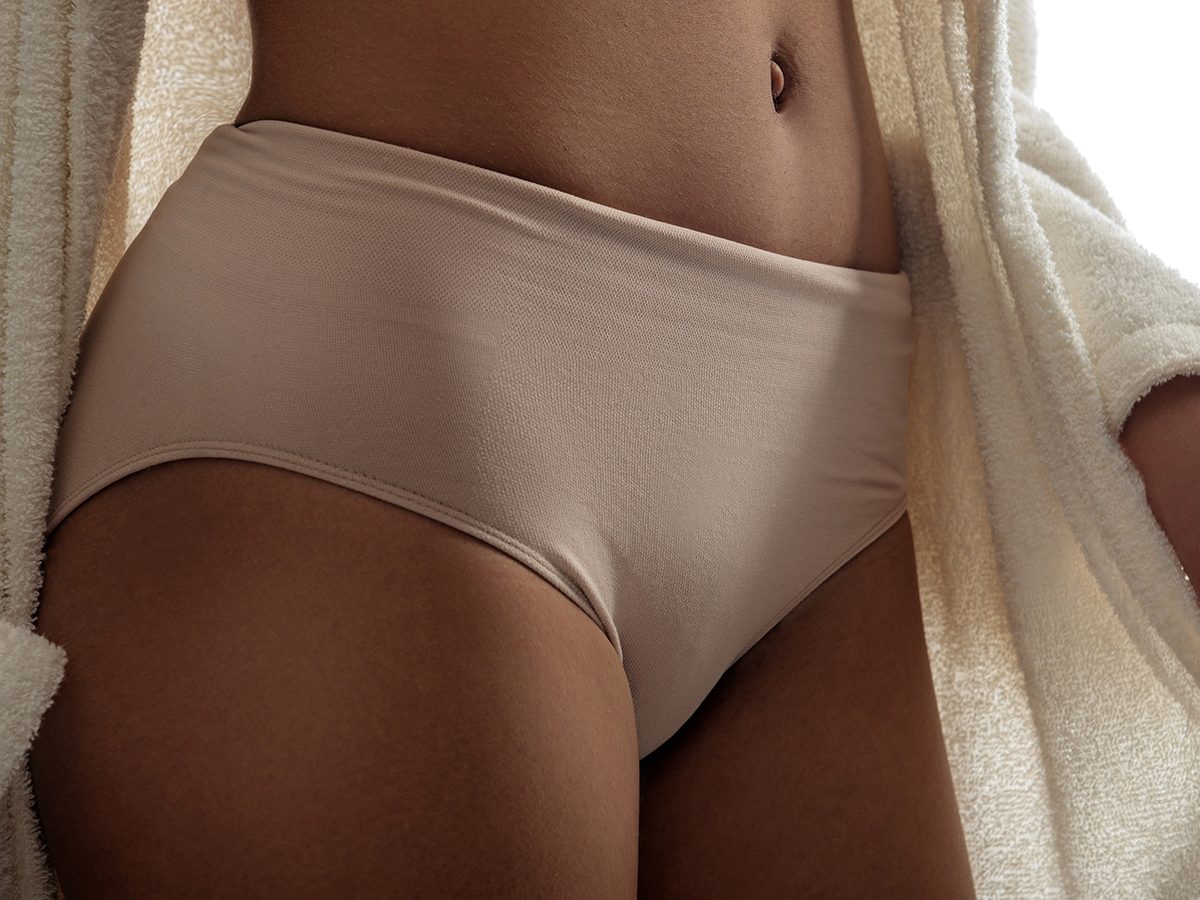Vaginitis: Do You Have This Common Condition?

Find out if your symptoms point to vaginitis, and if so, what you can do.
Vaginitis is an umbrella term used to describe an inflamed, itchy or sore vaginal area, or a change in the consistency or odour of vaginal discharge.
But because these disagreeable symptoms can be caused by so many different things—bacterial infection (also called bacterial vaginosis), yeast infection, a sexually transmitted infection (such as trichomoniasis, chlamydia or gonorrhea), detergents, soaps, fabrics, sexual activity, a forgotten tampon, and even skin conditions like psoriasis or eczema—often the toughest part is figuring out the cause so the problem can be effectively treated.
You’re not alone
Vaginitis can affect all people with vaginas, from younger to older people, although it most commonly crops up in the reproductive years, since contributing factors include hormonal changes and sexual activity.
Most people with vaginas will have at least one episode of vaginitis at some point in their lives, and some may have repeated episodes. But not every person will see their doctor about it, and in fact, many cases will resolve without medical help.
“If a woman has a severe situation, she should obviously see a healthcare provider as soon as she can,” notes Dr. Unjali Malhotra, a family physician and women’s health expert in Vancouver. But if the problem is mild, it may go away on its own after one menstrual cycle.
“Normal things like pregnancy, advancing age and ovulation can change the odour and consistency of discharge, and cause irritation,” Malhotra adds.
Should I use soap, water or douche?
If your nether parts aren’t too painful, the first step may be to give your vaginal area a chance to heal itself. Stop using soaps and shower gels, which can worsen irritation; after all, the skin in the vulvar (external) area is sensitive.
Instead, cleanse by adding a little salt (Epsom, table or sea salt are fine) to your next bath, or use a hand-held shower head to gently flush the affected area with water. Then let your vagina’s amazing self-cleaning powers do their work.
But don’t use a douche. “Douching actually predisposes women to vaginitis,” says Dr. Mark Yudin, an OB/GYN with special training in female infections at St. Michael’s Hospital in Toronto. “They’re more susceptible to getting an infection because they don’t have healthy bacteria to keep the environment normal.”
Also in the quick-fix department, many women grab an over-the-counter yeast infection treatment from a drugstore at the first sign of an irritated vagina. “It’s really common for women to have itching and discharge and assume that it’s a yeast infection,” says Malhotra.
While self-treatment for one episode is okay, you need to talk to your doctor—if the problem persists or keeps coming back, because it may be caused by something other than a yeast infection. And if irritated vaginal tissue doesn’t heal, it can become infected more easily.
(Related: 10 Foods Your Vagina Needs You to Eat)
The true cause of vaginitis
A healthcare provider can help track down the true cause of vaginitis, starting with an examination of the vagina and the vulvar area. Your doctor may observe redness or lesions on any of these parts.
He or she can take a culture to look for vaginitis-causing culprits such as bacterial overgrowth or a sexually transmitted parasite called trichomoniasis.
Untreated, both kinds of infections can interfere with a healthy pregnancy, and they raise your risk of sexually transmitted infections including HIV.
Your doctor will ask questions
- Have you been using bubble bath? You might be sensitive to its chemical content.
- Do you put a scented dryer sheet in with your delicates? You could be reacting to the added fragrance.
- The interrogation may get personal, too—have you had multiple sex partners? Does your partner ejaculate inside you? Either activity can change the balance of normal bacteria in your vagina.
- Do you use panty liners? Daily use of pads or liners can increase skin irritation.
- What’s your underwear made of? Cotton provides better absorption and air circulation than nylon or Lycra.
- What do you wear to bed? Going commando gives your tissues a chance to breathe.
- Do you wipe from front to back in the bathroom instead of vice versa? This will avoid the transfer of bacteria.
- “They need to gather quite a bit of information, so having a professional that you’re comfortable with is important,” says Malhotra.
Yes, there’s a cure
Once the source of vaginitis has been identified, it can be treated.
Your doctor may prescribe antibiotics for a bacterial infection. If you have a skin condition like eczema, you may be given an ointment such as a steroid cream. If it’s a yeast overgrowth, you’ll need an over-the-counter yeast infection treatment, or a prescription treatment from your doctor. (And now you can treat yeast infections with a pill you take by mouth. CanesOral is available across Canada without a prescription.)
Often a cure can be as simple as cleansing your vagina with water only (no soap), or changing to a mild laundry detergent. If you happen to have sensitive skin in general, you may find that your vagina is particularly reactive to chemicals, fragrances and dyes.
“Some women have vaginitis once in a blue moon,” says Yudin. “But those with repeated occurrences really need an examination to determine what’s causing their symptoms.”
Next: I Need You to Know that All Vulvas Are Beautiful
Popular Videos
